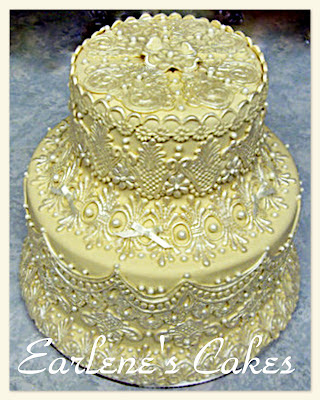Here are some basics to follow..
1. Generously grease inside of pan..I love the sprays like Baker's Joy or Pam for baking.
Some people use shortening and some flour, but I don't love the deposits of flour. So if you do
the flour method, make sure to tap the excess flour out.
2. Turn oven 10 to 15 minutes before you plan to use it to allow time for it heat to baking temperature.
3. Measure liquids at eye level in standard liquid measuring cups. Baking requires for everything
to be perfectly measure..
4. For best results use large egg size eggs (about 1/4 cup each).
5. Beat the cake mix batters for the time and speed specified. Time the beating carefully, beating only for the length of time and the mixer speed specified in the recipe directions.
Over beating breaks down the cake structure and causes low volume and shrinkage during the cooling of the cake.
Under beating produces a lumpy batter in which the ingredients are not properly mix.
6. If using more batter than one cake mix yields for a large pan reduce oven temperature approximately 25* and increase baking time.
If you have a small mixer, do one package of mix at a time.
7. Bake your cake immediately after mixing, as near the center (both vertical and horizontal center), of the oven as possible. Allow at least an inch of space on all sides and between the pans. If you use 2 oven racks, stagger the pans so one cake is not directly above the other.
8.Test your cake for doneness while they are still in the oven. Time of baking will change according to temperature, type of cake, and size of pan.
9. Avoid opening oven until the cake looks done. Usually it's starts smelling like cake in the house and the cake starts separating from the pan. There are more chances for the cake to fall down in the center if the door of the oven is open.
10. Cool cakes in pan for ten minutes on cake rack. Larger cakes might need more time.
If cake has cooled too long and won't release from pan, return it to a warm oven (250*), for a few minutes and then release the cake from the pan.
11. For bigger cakes you can use a cookie sheet to flip the cake. If the cake has a dome do not let the cake rest on that side, it can break your cake. Don't decorate a cake that is still warm..
12. Inaccurate oven temperatures account for the majority of baking problems. If your cakes have indications of under baking get an oven thermometer to make sure you have the proper temperature. If your cake is baking higher on one side more than the other, could be oven temperature, but make sure your oven is leveled.
13. Cakes can be frozen for up to 3 months wrapped in saran wrap and then heavy duty aluminum foil.
14. Iced cakes must be frozen tightly wrapped. When defrosting, keep cake wrapped until completely thawed.
15. Cakes that are not iced can be at room temperature for up to 24 hours. But keep in mind the chances of a dry cake will go up, the longer it stays without icing. Icing keeps the moisture in the cake..
Hope this helps!
Edna De la Cruz.. :)
Tutorial courtesy of Edna De La Cruz
2009
All Rights Reserved
This material may not be republished or reproduced in any manner without the expressed permission of the author.


























Great baking tips Edna!! Thank you so much for sharing!!
ReplyDeleteEdna...thank you so much for sharing this! I've always love your work!!
ReplyDeleteThese are great tips to people like me who's just learning the Art of cake making and decorating. Thanks for sharing.
ReplyDeleteThanks for the great tips. I need to learn how NOT get muffin tops on my cakes ! I'm still learning though. I hope to make cakes as great as yours some day !
ReplyDeleteUsing baking strips do help with getting rid of the muffin tops on the cakes.. :)
ReplyDeletegreat tips! thank you :)
ReplyDeleteAfter you crumbcoat the cake do you put it in the fridge or do you leave it at room temp? If you do refridgerate it, do you let it get back to room temp before you put the fondant on?
ReplyDeleteThanks in advance for the help.
ReplyDeleteThanks for sharing those helpful tips!
ReplyDeleteAfter I crumbcoat I put it back in the fridge. The icing hardens and is easier to give it a second coat. Plus it has some time to settle down too.
ReplyDeleteEdna :)
Edna, gracias por compartir tus talentos. Eres una gran inspiracion! Sandra Roman
ReplyDelete